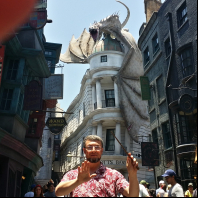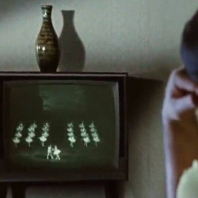non-Hollywood reality
 iv_an_ru — 25.03.2025
"
iv_an_ru — 25.03.2025
"...
--- Hello, Interstellar VFX supervisor here. You are correct that the asymmetrical appearance of Gargantua was reduced, we did this by reducing the spin of our black hole simulation from 0.9999c to 0.75c. The shape is correct for a 200 million solar mass black hole spinning at 0.75c. Why did we do this? We preferred the look of the more "classic" circular shadow for aesthetic reasons. We chose not to depict a hotter accretion disc for story reasons - the accretion disc around Gargantua is old, thin, and stable, what Kip described as an "anaemic" accretion disc, with a temperature similar to that of the surface of our sun, so it was just about plausible that our futuristic space craft, the Endurance, might be able to travel near to it. Chris didn't ask us to remove the doppler effect, we just chose not to offer it up. Regarding the wormhole - our DNGR software was capable of rendering a physics-correct trip through the throat of it, but we found it to be not very dramatic, the images that we rendered in this manner do feature in the finished effect, combined with a lot of other stuff that's more impressionistic.
--- Out of curiosity, did the VFX team and Kip consider to include spaghettification as an effect for the movie but decided against it? I was expecting to see Matthew McConaughey start to get stretched and compressed after he passed through the event horizon before arriving at the tesseract (due to the fact that in a supermassive black hole like Gargantua, the spaghettification process occurs after you cross the event horizon). I was kind of surprised to not see that effect.
--- No, because spaghettification would not occur with a black hole of Gargantua's size/mass and spin rate (0.99999 C). Spaghettification is the result of the gravity changing very rapidly over short distances. Kip spent time figuring out how massive the black hole needed to be in order to reduce the gravitational gradiants to the point where spaghettification would not occur - we ended up with a mass of 200 million solar masses. Had we depicted Gargantua as a stellar mass black hole (ie similar to the mass of our Sun) it would have been a different deal - the smaller the black hole the more extreme the gravitational gradients. In the film Cooper refers to making a slingshot manoeuvre around a nearby neutron star - Kip pointed out that the intense gravitational gradients around the small, dense neutron star would rip the Endurance apart, but it stayed in the script!
...
"
...К реально ценным постам бывают и реально ценные комменты. Но это надо столько сил вбухивать в посты, что я уж лучше продолжу халтурить в жеже.
|
|
</> |

 Проектор для дома: 7 критериев правильного выбора техники
Проектор для дома: 7 критериев правильного выбора техники  «Ахалай-махалай». Как назначить цену на услуги волшебника?
«Ахалай-махалай». Как назначить цену на услуги волшебника?  Пролето. Часть третья: Земля в иллюминаторе
Пролето. Часть третья: Земля в иллюминаторе  Неадекватное поведение Долиной на прощании с Кеосаяном и нахамивший зрителям
Неадекватное поведение Долиной на прощании с Кеосаяном и нахамивший зрителям  негодяй Проханов....
негодяй Проханов....  А всему предпочла...
А всему предпочла...  19 октября
19 октября  Выгорание...
Выгорание...  Балет "Лебединое озеро" никогда не показывали в день смерти генсека СССР или в
Балет "Лебединое озеро" никогда не показывали в день смерти генсека СССР или в 



